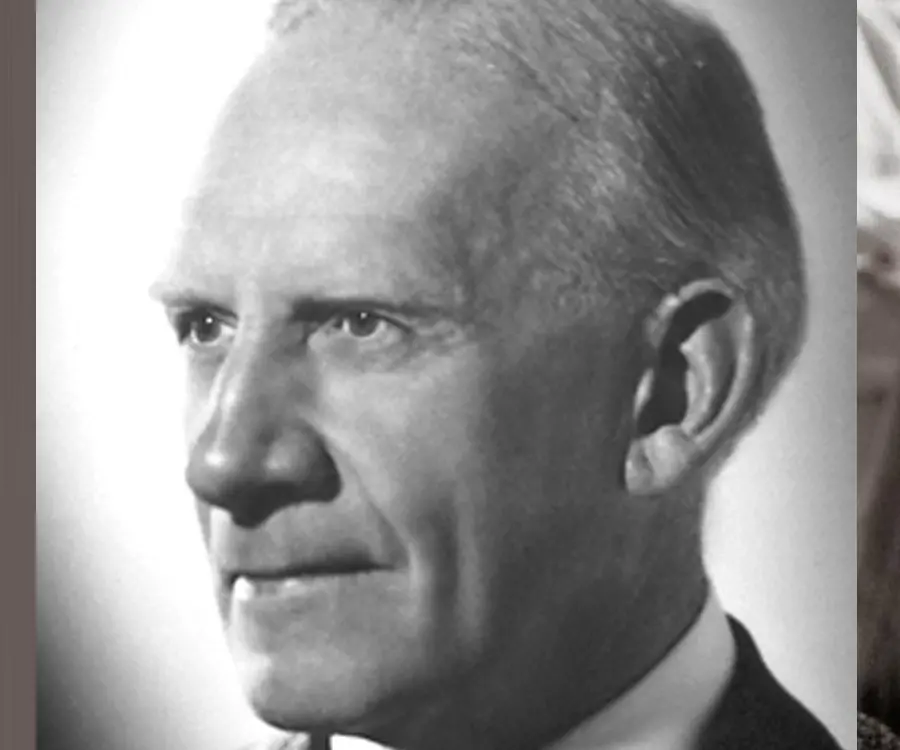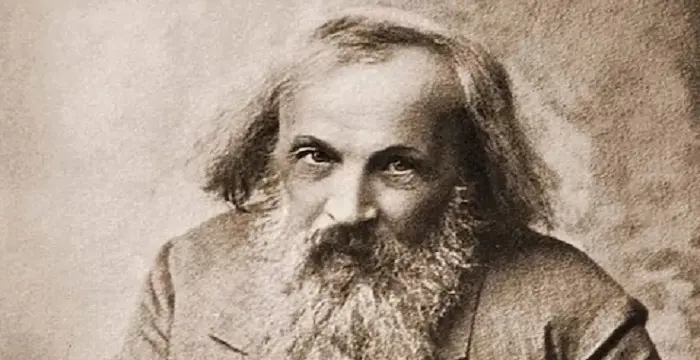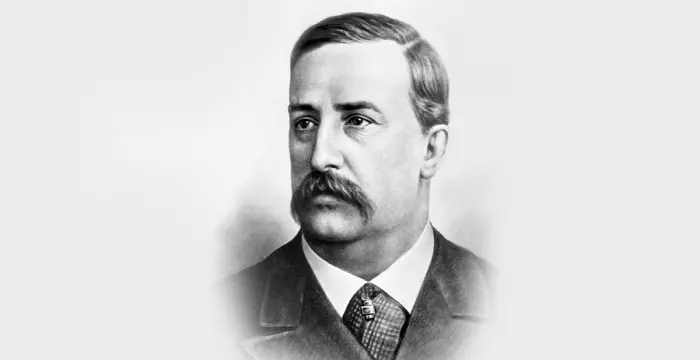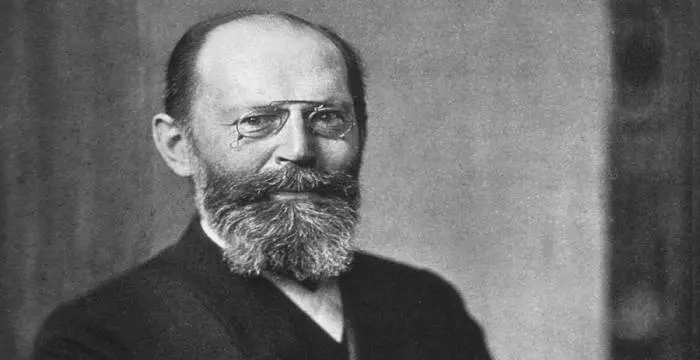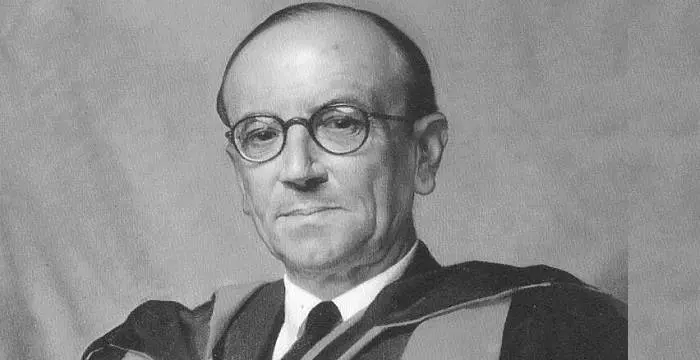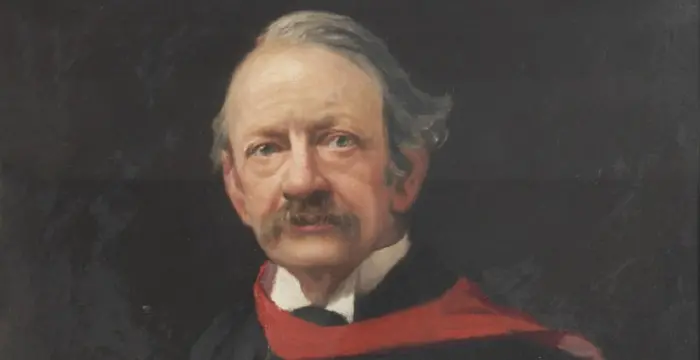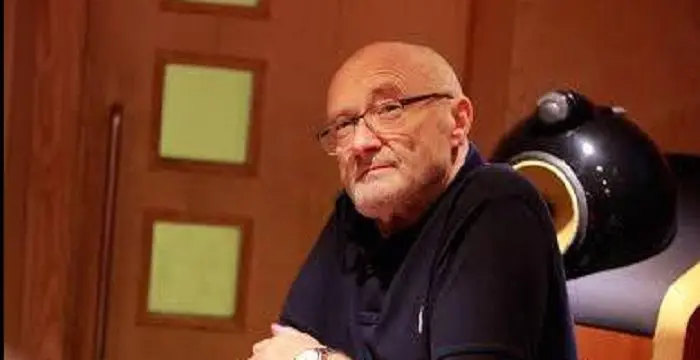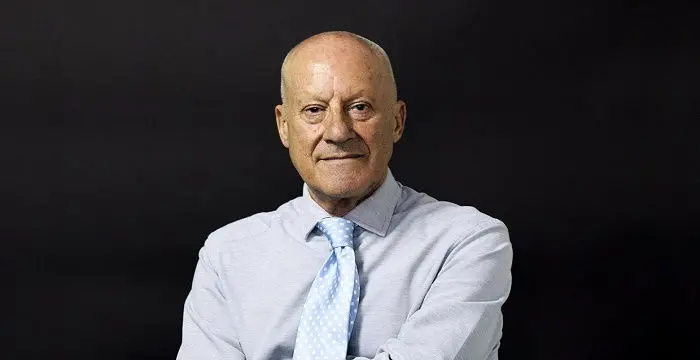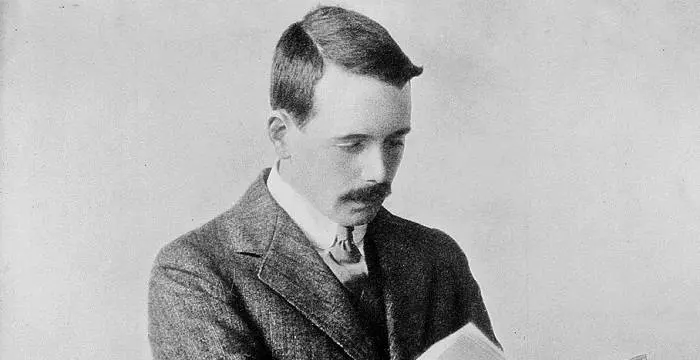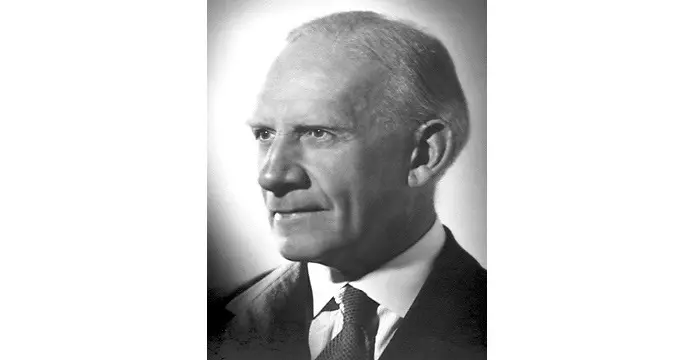
Robert Robinson - University Of Manchester, Family and Childhood
Robert Robinson's Personal Details
Sir Robert Robinson was a British scientist who received the Nobel Prize in Chemistry
| Information | Detail |
|---|---|
| Birthday | September 13, 1886 |
| Died on | February 8, 1975 |
| Nationality | British |
| Famous | University Of Manchester, Scientists, Chemists, Organic Chemists |
| Spouses | Gertrude Maud Walsh, Stearn Sylvia Hillstrom |
| Known as | Sir Robert Robinson |
| Universities |
|
| Notable Alumnis |
|
| Birth Place | Chesterfield, Derbyshire, England |
| Gender | Male |
| Father | William Bradbury Robinson |
| Mother | Jane Davenport |
| Sun Sign | Virgo |
| Born in | Chesterfield, Derbyshire, England |
| Famous as | Scientist |
| Died at Age | 88 |
// Famous Chemists
Henry Cavendish
Henry Cavendish was a theoretical chemist and physicist, renowned for discovery of hydrogen and calculation of the mass of earth. To know more about his childhood, profile, timeline and career read on
Walter Kohn
Nobel Laureate Walter Kohn was an Austrian-born American theoretical chemist and physicist. Check out this biography to know about his childhood, life, achievements, works & timeline.
Jabir Ibn Hayyan
Jabir Ibn Hayyan was a medieval era polymath. Check out this biography to know about his life, works and achievements.
Robert Robinson's photo
Who is Robert Robinson?
Sir Robert Robinson was a British scientist who received the Nobel Prize and Knighthood for his work on the structure and synthesis of natural elements which included plant pigments and alkaloids. He was an authority on chemistry, synthesis, electronic theory and other scientific subjects. He was able to synthesize many flavones and anthocyanins from his initial study of plant pigments. He focused his research on alkaloids and their complex structures which occurred naturally and had biological and chemical effects on all living things. His studies on the chemical reactions that occur in plants to form alkaloids helped him discover the structures of morphine and strychnine in 1925 and 1946 respectively. His research led to the synthesis of penicillin and many other drugs which are used to fight malaria. He was also one of the proponents of the theory of electrons in organic chemistry which was related to the structure of organic molecules. He helped in creating many new dyes which are used in the textile industry. He was an inventor as well and invented an automatic lint cutting machine in his younger days. He received an Order of Merit for his research work in the field of organic chemistry.
// Famous Organic Chemists
Dmitri Mendeleev
Dmitri Mendeleev was a Russian chemist who is best known for his discovery of the periodic law. Check out this biography to know about his childhood, life, achievements, works & timeline
Aleksandr Borodin
Aleksandr Borodin was a prodigal Russian music composer and scientist. This biography gives detailed information about his childhood, life, works, achievements and timeline.
Hermann Emil Fischer
Emil Fischer was a Nobel Prize winning chemist from Germany who is known for inventing the ‘Fischer Projection’ method. To know more about his childhood, career, profile and timeline read on
Childhood & Early Life
Sir Robert Robinson was born on September 13, 1886 on the Rufford Farm near Chesterfield, Derbyshire, United Kingdom. His father was William Bradbury Robinson and his mother was Jane Davenport who was the second wife of William.
His father had ten children from his first marriage while Robert was the eldest of the five children from his father’s second marriage.
He first attended a kindergarten school in a town in near Chesterfield.
After kindergarten he attended the ‘Chesterfield Grammar School’ as a weekly boarder where his interest in mathematics was first aroused.
When he was twelve-year-old, he attended the ‘Fulneck School’ near Leeds in West Yorkshire as a boarder.
In 1902 Robert was sent by his father to the ‘Manchester University’ to study chemistry as chemists were in great demand in the textile industry.
In 1905 he graduated at the top of his class (BSc) with honors in chemistry from ‘Manchester University’.
After graduation he joined Professor William H. Perkin’s organic chemistry.
He was able to earn his DSc degree from the ‘Victoria University of Manchester’ in 1910.
Career
In 1912 Sir Robert Robinson travelled to Australia to fill the chair in the ‘Department of Pure and Applied Chemistry’ at the ‘University of Sydney’. Here he did research on the synthesis of various ‘catechol’ derivatives, on C-alkylations of enolates, and on ‘eudesmin’, a component of the oil derived from Australian Eucalyptus trees.
In 1914 he was invited by the ‘British Association for the Advancement of Science’ to visit them where he met famous British chemists such as H. E. Armstrong, Nevil V. Sidgwick and others.
At the age of twenty-nine he was appointed to the chair of Organic Chemistry in the University of Liverpool, UK, and was the youngest candidate. He and his wife returned to England while the First World War was going on and resumed his duties at the university in January 1916.
Soon like all other chemists he was asked to contribute to the war effort and help in the manufacture of picric acid, TNT, Tropinone, morphine and odeine.
In 1917 he joined ‘Advisory Board’ with other famous chemists to develop natural resources where he developed a new method for producing synthetic ‘octanol’.
Once he was asked by the Liverpool Harbor authorities to help them put out a fire caused by burning oil. Instead of taking a personal fee he asked the authorities to donate the money to the university library.
In 1920 he resigned from the chair at the University of Liverpool and became the Director of Research for the ‘British Dyestuffs Corporation’.
In 1921 he decided to return to his academic life and applied for the just vacated chair at St. Andrews in Scotland and was selected.
The chair for the professorship of organic chemistry at the University of Manchester fell vacant in 1922 and he left St. Andrews after one year to fill this chair.
He collaborated with many young researchers there and worked on pigments which were derived from plants.
From 1925 he started working with his wife Gertrude on the process of synthesizing fatty acids.
In 1928 he accepted professor’s post at the University of London.
In 1930 he was appointed to the ‘Waynflete Professor’ of chemistry of the Oxford University and held the post till 1955.
In 1947 he was sent as the UK delegate to the UNESCO conference and was asked to present the presidential address to the Royal Society the same year.
In 1955 he was appointed as the ‘Emeritus Professor and Honorary Fellow’ of the ‘Magdalen College’.
He was a Director of the ‘Shell Chemical Company’ from 1955.
Awards & Achievements
He was elected as a ‘Fellow of the Royal Society’ in 1920.
In 1921 he became a member of the council in the ‘Chemical Society’.
He received his knighthood in 1939.
The Nobel Prize for chemistry was awarded to him in 1947 for his research on alkaloids.
He received an Order of Merit in 1949.
Personal Life & Legacy
He married Gertrude Maud Walsh, a fellow student in Manchester, on August 7, 1912.
His first daughter was born in 1914 but died after one day. Their second daughter Marion was born in 1921 and a son later.
He married Stearn Sylvia Hillstrom in 1957 after Gertrude’s death in 1954.
Sir Robert Robinson died on February 8, 1975 in London, United Kingdom.
Trivia
Sir Robert Robinson was an enthusiastic chess player and a mountaineer at heart. He had climbed many mountains in Europe and New Zealand.
// Famous Scientists
Juliane Koepcke
Juliane Koepcke is a German-Peruvian biologist, who was the lone survivor among the 92 passengers and crew of the ill-fated LANSA Flight 508 that crashed in the Peruvian rainforest on 24 December 1971. Know more about her life in this biography.
Henry Cavendish
Henry Cavendish was a theoretical chemist and physicist, renowned for discovery of hydrogen and calculation of the mass of earth. To know more about his childhood, profile, timeline and career read on
Konstantin Tsiolkovsky
Konstantin Tsiolkovsky was a Russian rocket scientist and a pioneer of astronautics. This biography provides detailed information about his childhood, family, personal life, career, achievements, etc.
Robert Robinson's awards
| Year | Name | Award |
|---|---|---|
Other | ||
| 0 | Nobel Prize for Chemistry (1947) | |
| 0 | Franklin Medal (1947) | |
| 0 | Albert Medal (1947) | |
| 0 | Davy Medal (1930) | |
| 0 | Royal Medal (1932) | |
| 0 | Copley Medal (1942) | |
Robert Robinson biography timelines
- // 13th Sep 1886Sir Robert Robinson was born on September 13, 1886 on the Rufford Farm near Chesterfield, Derbyshire, United Kingdom. His father was William Bradbury Robinson and his mother was Jane Davenport who was the second wife of William.
- // 1902In 1902 Robert was sent by his father to the ‘Manchester University’ to study chemistry as chemists were in great demand in the textile industry.
- // 1905In 1905 he graduated at the top of his class (BSc) with honors in chemistry from ‘Manchester University’.
- // 1910He was able to earn his DSc degree from the ‘Victoria University of Manchester’ in 1910.
- // 1912In 1912 Sir Robert Robinson travelled to Australia to fill the chair in the ‘Department of Pure and Applied Chemistry’ at the ‘University of Sydney’. Here he did research on the synthesis of various ‘catechol’ derivatives, on C-alkylations of enolates, and on ‘eudesmin’, a component of the oil derived from Australian Eucalyptus trees.
- // 7th Aug 1912He married Gertrude Maud Walsh, a fellow student in Manchester, on August 7, 1912.
- // 1914In 1914 he was invited by the ‘British Association for the Advancement of Science’ to visit them where he met famous British chemists such as H. E. Armstrong, Nevil V. Sidgwick and others.
- // 1914 To 1921His first daughter was born in 1914 but died after one day. Their second daughter Marion was born in 1921 and a son later.
- // Jan 1916At the age of twenty-nine he was appointed to the chair of Organic Chemistry in the University of Liverpool, UK, and was the youngest candidate. He and his wife returned to England while the First World War was going on and resumed his duties at the university in January 1916.
- // 1917In 1917 he joined ‘Advisory Board’ with other famous chemists to develop natural resources where he developed a new method for producing synthetic ‘octanol’.
- // 1920In 1920 he resigned from the chair at the University of Liverpool and became the Director of Research for the ‘British Dyestuffs Corporation’.
- // 1920He was elected as a ‘Fellow of the Royal Society’ in 1920.
- // 1921In 1921 he decided to return to his academic life and applied for the just vacated chair at St. Andrews in Scotland and was selected.
- // 1921In 1921 he became a member of the council in the ‘Chemical Society’.
- // 1922The chair for the professorship of organic chemistry at the University of Manchester fell vacant in 1922 and he left St. Andrews after one year to fill this chair.
- // 1925From 1925 he started working with his wife Gertrude on the process of synthesizing fatty acids.
- // 1928In 1928 he accepted professor’s post at the University of London.
- // 1930 To 1955In 1930 he was appointed to the ‘Waynflete Professor’ of chemistry of the Oxford University and held the post till 1955.
- // 1939He received his knighthood in 1939.
- // 1947In 1947 he was sent as the UK delegate to the UNESCO conference and was asked to present the presidential address to the Royal Society the same year.
- // 1947The Nobel Prize for chemistry was awarded to him in 1947 for his research on alkaloids.
- // 1949He received an Order of Merit in 1949.
- // 1954 To 1957He married Stearn Sylvia Hillstrom in 1957 after Gertrude’s death in 1954.
- // 1955In 1955 he was appointed as the ‘Emeritus Professor and Honorary Fellow’ of the ‘Magdalen College’.
- // 1955He was a Director of the ‘Shell Chemical Company’ from 1955.
- // 8th Feb 1975Sir Robert Robinson died on February 8, 1975 in London, United Kingdom.
// Famous University Of Manchester
James Chadwick
Sir James Chadwick CH was an English physicist, who won the 1935 Nobel Prize in Physics for his discovery of neutron. Check out this biography to know about his childhood, life, achievements, works & timeline.
J. J. Thomson
J.J. Thomson was an English physicist and mathematician. This biography profiles his childhood, life, academic career, research and timeline.
Milo Yiannopoulos
Milo Yiannopoulos is a British technology journalist. Let’s have a look at his family, personal life, career, achievements, controversies, and some facts.
Phil Collins
Phil Collins (Philip David Charles Collins) is an English musician, drummer, singer, and actor. This biography profiles his childhood, family, personal life, career, etc.
Norman Foster
Norman Robert Foster often referred to as the ‘hero of high-tech’ is one of the most distinguished British architects. This biography profiles his childhood, life, career, works, achievements and timeline.
Henry Moseley
Henry Moseley was a renowned English physicist who developed the Moseley’s Law in the field of x-ray spectroscopy. To know more about his childhood, career, profile and timeline read on.
Robert Robinson's FAQ
What is Robert Robinson birthday?
Robert Robinson was born at 1886-09-13
When was Robert Robinson died?
Robert Robinson was died at 1975-02-08
Where was Robert Robinson died?
Robert Robinson was died in Great Missenden
Which age was Robert Robinson died?
Robert Robinson was died at age 88
Where is Robert Robinson's birth place?
Robert Robinson was born in Chesterfield, Derbyshire, England
What is Robert Robinson nationalities?
Robert Robinson's nationalities is British
Who is Robert Robinson spouses?
Robert Robinson's spouses is Gertrude Maud Walsh, Stearn Sylvia Hillstrom
What was Robert Robinson universities?
Robert Robinson studied at University Of Manchester, University of Manchester
What was Robert Robinson notable alumnis?
Robert Robinson's notable alumnis is University Of Manchester
Who is Robert Robinson's father?
Robert Robinson's father is William Bradbury Robinson
Who is Robert Robinson's mother?
Robert Robinson's mother is Jane Davenport
What is Robert Robinson's sun sign?
Robert Robinson is Virgo
How famous is Robert Robinson?
Robert Robinson is famouse as Scientist



